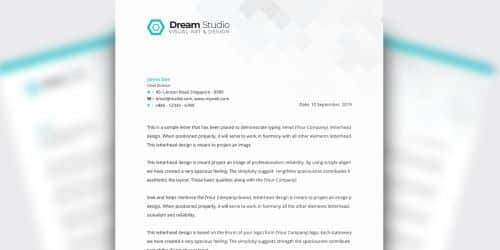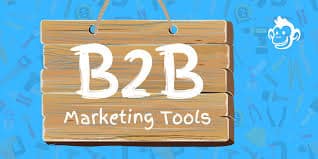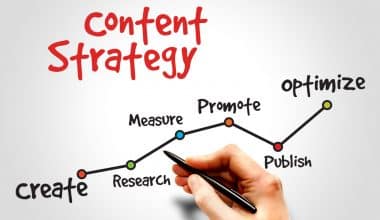Ever felt the need to get a message across clearly and professionally at work? You know, a situation where an email just seems a bit too casual? Well, a business memorandum, or memo for short, is your perfect solution. It’s a common way to share information or propose ideas to colleagues or even your boss.
In this guide, I’ll give you the lowdown on everything you need to know to craft an effective business memorandum. I’ll break down the essential parts of a memo, share tips for writing concisely and clearly, and even provide some helpful business memorandum examples and templates to jumpstart your memo writing.
Key Points
- Business memorandum operates as a catalyst for action, swiftly disseminating vital information while paving the way for deeper understanding through supplementary materials.
- A Meeting Agenda Memo is a concise document I create to outline the key points and objectives of an upcoming meeting.
- Memos are typically one or two pages at most. Why? Because people are busy, and information overload is a real thing. We want the reader to grab the key points quickly and move on.
- Unlike a comprehensive report, which goes into context, draws conclusions, and provides detailed information, a memorandum opts for brevity, spotlighting specific points.
Understanding What a Memorandum is
A memo, short for memorandum, serves as a brief yet potent means of relaying crucial information within an organization. It acts as a concise written message conveying directives, updates, announcements, or policy shifts. Unlike a comprehensive report, which goes into context, draws conclusions and provides detailed information, a memorandum opts for brevity, spotlighting specific points. Think of it as the quick brushstroke on a canvas, capturing the essence without delving into intricate details.
Also. imagine you need to get a message across at work, fast. Something important has changed, like a new policy or an upcoming deadline. You don’t have time for a lengthy report – you just need everyone on the same page, pronto. That’s where a memo comes in.
Think of it as a concise, to-the-point message. It hits the high notes – the what, who, when, and why. No need to go into every detail or explain the history behind the decision. That’s what reports are for, with all their context and analysis. A memorandum cuts straight to the chase.
You can use memos in both old-school and new-school ways. Back in the day, they were physical documents passed around the office. Now, they can be part of an email, attached, or right there in the body. It’s all about what works best for your situation.
In essence, a business memorandum operates as a catalyst for action, swiftly disseminating vital information while paving the way for deeper understanding through supplementary materials. Its role is not to provide exhaustive detail but to serve as a beacon, guiding recipients toward the broader strokes of organizational communication and facilitating prompt responses to internal developments.
How to Write a Memorandum
When writing a Business memorandum, there are several key steps to ensure clarity and effectiveness. let’s break down how to write a memo. It’s pretty straightforward!
#1. Compose a Heading.
First things first, we need a clear heading. This is like the signpost of your memo – it tells everyone who it’s for (think names or departments), the date it was written, who wrote it (that’s me!), and the subject. Keep the subject line short and catchy, something that gives readers a quick idea of what to expect.
#2. Compose the Introduction.
Now, go into the introduction. Here’s where I explain what the memo is all about in just a couple of sentences. I’ll highlight the issue at hand and the solution I’ve chosen.
#3. Give a Little Background on the Problem.
This section is my chance to explain the background of the memorandum. Maybe there’s a budget change, a company restructure, or a new procedure rolling out. Whatever it is, I want to justify the changes being implemented. This background info helps everyone understand the “why” behind the “what.”
#4. List the Actions and the Deadline (Optional).
Depending on the memo’s purpose, I might need to outline some action items. These are like mini-tasks for the employees to complete. It could be anything from finishing a specific task to providing information by a certain deadline. If there are deadlines or expected changes, I’ll include them here too. This way, everyone knows when things are happening and what’s expected of them. But hey, if there’s nothing specific employees need to do, this section can be skipped entirely
#5. Finish with a statement.
This is my chance to wrap things up and leave a lasting impression. Is there anything super important I want everyone to remember? Maybe there’s a specific contact person for questions. I’ll jot that down here for easy reference.
#6. Before Submitting, Check and Proofread.
Lastly, before hitting send, I double-check everything. Typos and misstatements can cause confusion, and that’s the last thing we want! A quick review polishes the memo and ensures the message comes across crystal clear.
And there you have it! With these steps in mind, you’re well on your way to crafting a clear, concise business memorandum that gets the job done.

Business Memorandum Example
You know how in movies, they rarely show the nitty-gritty details of office life? Well, consider this my way of going the extra mile. I’m here to give you a firsthand look at real-life memos in action, sans the Hollywood gloss.
Sure, business memorandum might not have the glamour of a blockbuster film, but they’re crucial in the business world. They’re the unsung heroes of office communication, quietly keeping things running smoothly behind the scenes.
So, buckle up as we embark on a journey through the world of business memorandum template examples. From formatting to tone, and everything in between, we’ll cover it all. By the end of this ride, you’ll be a business memorandum maestro, ready to tackle any communication challenge that comes your way. If you need a little extra guidance, check out these business memorandum templates examples to help you along the way.
BusinessYield Business Memorandum Templates
#1. Request Memorandum
A request memorandum is my way of politely asking for something at work. It’s like a formal email, but for internal use. I write it out to explain what I need and why it’s important. Being clear from the start saves everyone time. First, I state the request. Is it approval for a project, access to specific resources, or maybe extra time on a deadline? Then I explain the situation. Why do I need this? How will it benefit the company? Numbers and data help here. If there’s a cost involved, I mention it upfront, along with any solutions I have in mind. Finally, I thank the reader for their time and consideration. It’s all about getting what I need while keeping things professional and respectful.
#2. Instructional Memorandum
An instructional memorandum, from my perspective, serves as a concise document designed to provide clear guidance or directives to individuals within an organization. It’s like a roadmap, offering step-by-step instructions on how to carry out specific tasks or procedures. In essence, it acts as a tool for communication, ensuring that everyone understands what needs to be done and how to do it effectively. Think of it as a beacon of clarity amidst the sometimes murky waters of workplace procedures.
I draft instructional memos all the time at work. They’re basically clear, concise documents that tell people how to do something. Need a new team member to learn the ropes of our expense report system? I’ll whip up a memo outlining each step. Updating a company policy? Another memo ensures everyone’s on the same page. They’re like mini-instruction manuals – short, sweet, and to the point.
#3. Policy Change Memorandum
I see them all the time – policy change memos. They’re my way of letting everyone know the rules of the game are shifting. Maybe a new law requires an update, or we identified a better way to do things. Whatever the reason, these memos keep everyone informed and on the same page.
Also, within the memo, I present a detailed analysis of the current policy framework, highlighting areas for improvement or adjustment. I articulate the reasons driving the proposed changes, drawing upon data, research, and stakeholder feedback to substantiate my arguments. Moreover, I outline the potential implications of the proposed changes, considering both short-term and long-term effects on various aspects of the organization.
Think of it as a heads-up – a roadmap for navigating the new policy. By the time they finish reading, everyone should be clear on what’s expected and how to move forward. No surprises, just smooth sailing with the updated policy.
#4. Meeting Agenda Memorandum
A meeting agenda memorandum is a concise document I create to outline the key points and objectives of an upcoming meeting. It serves as a roadmap, guiding participants through the topics that will be discussed and the goals we aim to achieve.
In essence, it lays out the agenda, ensuring everyone is on the same page and prepared for the meeting. My goal when drafting this memo is to provide clarity and structure, enabling efficient communication and decision-making during the meeting. By listing each item to be addressed and assigning time slots, I help prioritize discussions and keep the meeting on track.
Additionally, I may include background information or supporting materials to give context to the topics at hand. This memo acts as a reference both before and during the meeting, allowing participants to come prepared and facilitating a productive discussion. By the end, we’ve accomplished our goals, and everyone walks away clear on the next steps. Now that’s a meeting worth attending!
#5. Office Closure Memorandum
An office closure memo is our way of letting everyone know we’re shutting down the office for a bit. Think of it as a heads-up that the building will be dark, the coffee machine will be cold, and our desks will be gloriously empty. We use these memos to tell you exactly when we’re closing the doors – start date, end date, the whole shebang.
Most of the time, it’s for a holiday or a special event, but hey, sometimes unexpected things come up. The memo will also mention if it’s a paid day off for everyone, which is always a bonus! And just in case something super urgent pops up while we’re gone, we might include information about who to contact for emergencies.
So, that’s the skinny on office closure memos – short, sweet, and lets you know when to expect some peace and quiet (or a chance to catch up on work from home, depending on your perspective!).
#6. PTO Policy Change Memorandum
A PTO policy change memo is a document I issue to inform employees about alterations to our paid time off (PTO) guidelines. Its purpose is to clarify adjustments made to the company’s policies regarding employee leave entitlements. This memo serves as a transparent communication tool, ensuring all staff members are aware of the modifications and understand their implications.
By directly addressing employees, I aim to convey the importance of the changes and provide the necessary details to facilitate comprehension. This document outlines the reasons behind the policy adjustments, such as business needs, legal requirements, or feedback from staff.
Additionally, it delineates the specific alterations in PTO accrual rates, usage procedures, or any other relevant aspects. Through this memo, I strive to maintain consistency and fairness in our PTO policies while also fostering a culture of openness and accountability within the organization.
Tips for Using Memo Templates Effectively
Memo templates can be a lifesaver, but let’s face it, a generic template can feel…well, generic. That’s why I always make sure to personalize them. Think of it like putting your own spin on a recipe.
- Consistency is key. When everyone uses the same template, it creates a sense of order and professionalism in your communication. Imagine walking into a kitchen where all the spices are scattered about – it would be hard to find anything! Having a consistent memo format is like having all the spices neatly labeled in a rack – you can find what you need quickly and get cooking, I mean, communicating, right away.
- The template provides the structure, but you can still add your company’s unique flavor by incorporating your logo, brand colors, or even a fun theme if that suits your company culture.
- I always have someone else take a look at my memo before I hit send. A second pair of eyes can catch typos or awkward phrasing that you might miss after staring at the screen for too long. It’s like having a taste tester before serving a dish – they might notice something a little off that you can fix before anyone else gets a bite.
Now, there are ways to make this whole memorandum thing a little less time-consuming. Here’s where automation comes in. Imagine having a system that can automatically send out important information to your team, tailored to their specific needs. That way, you can focus on the bigger picture, and the system takes care of the details. It’s like having a sous chef in the kitchen – they handle the prep work while you get creative with the main course.
How Long Should a Memorandum Be?
Memos, like most business writing, prioritize clarity and getting straight to the point. We follow a similar format: single-spaced, left-justified text with clear margins. Instead of fancy indentations, we skip a line between paragraphs to keep things easy to read.
But the real question is, how much can you fit on one of these bad boys? The good news is, you don’t need a novel. Memos are typically one or two pages at most. Why? People are busy, and information overload is a real thing. We want the reader to grab the key points quickly and move on.
Think of it like this: you’re delivering a message to a colleague, not writing the great American business novel. Be clear, and concise, and get your point across efficiently. That one or two pages is your sweet spot.
What Are the 3 Kinds of Memorandum?
Of course, there can always be exceptions. If you have a complex issue with a lot of background information, it might run a tad longer. But even then, do your best to be ruthless. Cut anything that’s not essential. Remember, the goal is to inform, not overwhelm.
Let’s break down those three common memo kinds:
#1. Suggestive Memorandum
Imagine I have an idea to improve a process. In a suggestive memo, I’d outline the problem, propose my solution, and explain the benefits. It’s like offering a well-reasoned suggestion to my colleagues, hoping they’ll see the value and consider implementing it.
#2. Confirmation Memorandum
This is all about clarity and documentation. Let’s say we decided to change a meeting time. I’d whip up a confirmation memo to everyone involved, summarizing the new date and time. It keeps everyone on the same page and avoids any confusion down the line.
#3. Request Memorandum
Need something? A request memo is your friend! I’d use it to politely ask a colleague for information, resources, or perhaps their approval on a project. The key here is to be clear about what I need and why it’s important.
While the purpose of each memo differs, the overall format stays consistent. Think of it as a template we can all adapt based on the situation. So, next time I need to communicate with colleagues, I’ll choose the memo style that best suits my needs – suggestive, confirmatory, or requesting information.
Is a Memorandum Legally Binding?
When it comes to whether a memorandum is legally binding, it all boils down to the specifics. You see, a memorandum of understanding (MOU) is indeed a legal document, but that doesn’t automatically mean it’s legally binding.
It typically serves as a precursor to a formal contract, indicating that the parties are on the brink of entering into a more concrete agreement. However, whether it holds legal weight depends on the language used and the intentions behind it.
In essence, an MOU can be legally binding if it clearly outlines the parties’ intentions to be bound by its terms. This means that the language must express a clear intent to create a legally enforceable agreement. If the memorandum lacks such language or if its terms are too vague or ambiguous, it may not be considered legally binding.
So, while an MOU can signify the impending formation of a contract, its legal status ultimately hinges on the specific language and circumstances involved.
- CONSULTING AGREEMENT: Requirements, How to Write It, and Template
- ENTREPRENEUR: What It Means to Be One & How to Start
- Keeping It Concise: Tips For Writing Clear and To The Point Memos
- How to Fill Out a Money Order Correctly: Step by Step Guide






